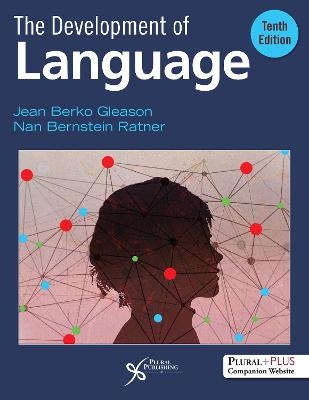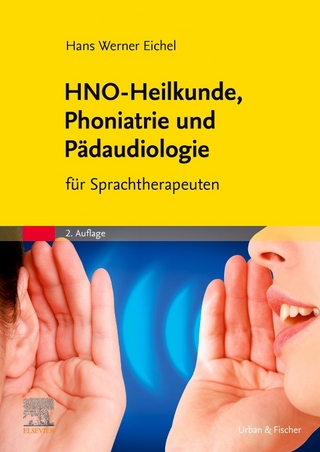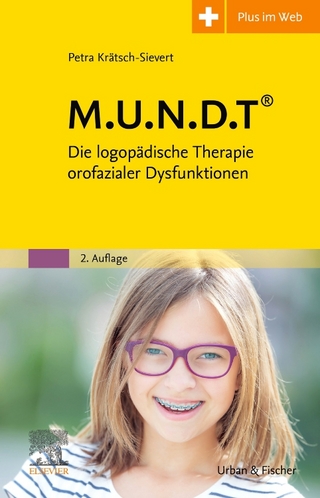
The Development of Language
Plural Publishing Inc (Verlag)
978-1-63550-426-2 (ISBN)
This classic text now in its tenth edition and now available from Plural Publishing, The Development of Language continues its focus on language acquisition in an unbiased, authoritative, and comprehensive way. Written by leading experts known for their research in the areas they discuss, this book has a multidisciplinary approach, and demonstrates the relevance of typical language development to speech-language pathologists, educators, clinicians, and those in other professions. Topics include the roots of language learning in infancy, phonology, syntax/grammar, word learning, bilingualism, pragmatics, literacy, atypical language development, and more.
This book provides the reader with an authoritative text that includes important and useful concepts and research findings. Emphasis is placed on language development in children who are learning languages other than, or in addition to, English, as well as children with risk factors for language delay or disorder. The text leads the reader through every stage of development—the early months before children begin to speak, the preschool and school years, and adolescence as children achieve mastery of adult-like language skills.
Key Features
Chapter pedagogy includes learning objectives, visual aids, video links, summaries, and suggested projects to extend students’ understanding and application of text concepts
Key terms are highlighted in the text with definitions provided in a Glossary
Clear and concise writing by authors who are known for their research in the subject area and their ability to explain complex topics to a broad audience
A multilingual and multicultural focus on acquisition in languages other than English, on non-mainstream varieties of English and on children learning two or more languages simultaneously (bilingualism), as well as children with developmental communication disorders
New to the Tenth Edition
Restructure of chapters to streamline information
Greater in-depth coverage of concepts that are frequently more difficult for students to master
Updated references to new research and the current literature
References are now at the end of each chapter
New and updated figures and photos
Coverage of the latest technological advances in basic research and clinical practice in child language
PluralPlus Online Ancillary Materials
For Instructors: PowerPoint lecture slides, video links, and an Instructor's Resource Manual, and a test bank.
For Students: Video links and eFlashcards
Jean Berko Gleason, PhD is one of the world's leading experts on children's language. She is professor emerita in the Department of Psychological and Brain Sciences at Boston University and former director of BU's Graduate Program in Applied Linguistics. Dr. Gleason has been a visiting scholar at Stanford University, Harvard, and the Linguistics Institute of the Hungarian Academy of Sciences in Budapest. She received her undergraduate and graduate degrees from Harvard/Radcliffe. She has been president of the International Association for the Study of Child Language, and is the author and editor of leading textbooks on language development and psycholinguistics. She created the Wug Test, the best known experimental study of children's language acquisition. Since writing her doctoral dissertation on how children learn to make plurals and past tenses in English she has published more than 125 articles on aphasia, language attrition, language development in children, gender differences in parents' speech, and cross-cultural differences. Her work is frequently cited in the professional literature, and has been featured in the popular press and on television, where she is featured in the PBS award-winning online Nova Science Now series "The Secret Life of Scientists." Her honors include an honorary degree from Washington and Jefferson College as well as the Roger Brown Award from the International Association for the Study of Child Language. ***** Nan Bernstein Ratner, EdD, CCC-SLP is a Professor of Hearing and Speech Sciences and Cognitive Neuroscience at the University of Maryland at College Park. She conducts research that has been funded by both the US NIDCD and NSF, and publishes frequently in the areas of language acquisition and speech/language disorders. Dr. Bernstein Ratner is a Fellow of the American Association for the Advancement of Science, and is an ASHA Honors recipient.
Preface
Acknoledgments
Contributors
Chapter 1. The Development of Language: An Overview and a Preview
Jean Berko Gleason and Brenda Caldwell Phillips
Learning Objectives and Outcomes
An Overview of the Course of Language Development
Atypical Language Development
The Structure of Language: Learning the System
The Biological Bases of Language
The Study of Language Development
Summary
References
Suggested projects
Chapter 2. Communication Development in Infancy
Rochelle Newman and Katie Von Holzen
Learning Objectives and Outcomes
The Social Context of the Preverbal Infant
Perceptual “Tuning” to Speech
The Expression of Communicative Intent Before Speech
Variation in Learning to Communicate
Summary
Suggested projects
References
Chapter 3. Phonological Development: Learning Sounds and Sound Patterns
Carol Stoel-Gammon, Shelley Velleman and Lise Menn
Learning Objectives and Outcomes
English Speech Sounds and Sound Patterns
Production: The Prelinguistic Period
Learning to Make Words
Learning to Pronounce
Phonological Development: Norms and Measures
When Speech Sound Development is Difficult
The Acquisition of English Morphophonology
Parents’ Role in Phonological Development
Phonological Awareness and Reading Readiness
Language Variation in the United States: Languages, Dialects and Speech Styles
Child Phonology Problems
Summary
Suggested Projects
Web Resources
References
Chapter 4. Semantic Development: Learning the Meanings of Words
Paola Uccelli and Meredith L. Rowe
Learning Objectives and Outcomes
The Relations Between Words and Their Meanings
Theoretical Perspectives on Semantic Development
The Study of Early Semantic Development
How Adult Speech Influences Children’s Semantic Development
Individual Differences in Vocabulary Development: Home and School Factors
Vocabulary Development and Assessment in Bilingual Children
Later Semantic Development
Connections Between Research and Practice
Metalinguistic Development
Summary
Suggested Projects
References
Chapter 5. Putting Words Together: Comprehension and Production of Morphology and Syntax in the Preschool Years
Andrea Zukowski and Nan Bernstein Ratner
Learning Objectives and Outcomes
Methods of Investigationg Children's Comprehension of Multiword Utterances
Methods of Investigating Children's Production of Multiword Utterances: Examining Spontaneous Speech
Entering the Complex Linguistic System
Two-Word Utterances
The Nature of Syntactic Rules
Measuring Syntactic Growth
Mean Length of Utterance (MLU): Advantages and Considerations
Developing Specific Grammatical Morphemes
Different Sentence Modalities
Later Developments in Preschoolers
Beyond the Preschool Years
Knowledge Versus Processing
Summary
Suggested Projects
References
Chapter 6. Language in Social Contexts: Development of Communicative Competence
Judith Becker Bryant
Learning Objectives and Outcomes
Language in Social Contexts
The Challenge of Acquiring Communicative Competence
How Do Children Acquire Communicative Competence?
When Exhibiting Communicative Competence is Difficult
Why Does Communicative Competence Matter?
Summary
Suggested Projects
References
Chapter 7. Theoretical Approaches to Language Acquisition
Karina Hamamouche and John N. Bohannon III
Learning Objectives and Outcomes
Distinguishing Features of Theoretical Approaches
Classic Behavioral Approaches
Linguistic Approaches
Language Acquisition Device (LAD) and Development
Interactionist Approaches
Information-Processing Approach
Social Interaction Approach
Gestural and Usage-Based Approach
Usage-Based Theory
Summary
Suggested Projects
References
Chapter 8: Variation in Language Development: Implications for Research and Theory
Beverly A. Goldfield, Catherine E. Snow and Ingrid A. Willenberg
Learning Objectives and Outcomes
The History of Variation in Child Language Research
Variation in Early Words
Segmenting the Speech Stream
Variation in Early Sentences
Stability of Style Across Words and Sentences
Sources of Variation
Context: The Interaction of Child, Caregiver and Language
Implications of Variation for Theories of Language Acquisition
Summary
Suggested Projects
References
Chapter 9. Atypical Language Development
Nan Bernstein Ratner and Catherine Torrington Eaton
Learning Objectives and Outcomes
Why Should We Study Atypical Development?
What Causes Atypical Language Development?
Developmental Language Disorder (DLD)
Special Considerations for Special Populations
Severe Hearing Impairment
Intellectual Disability
Autism Spectrum Disorder (ASD)
Atypical Speech Development
Evaluation of Suspected Speech and Language Disorders in Children
Summary
Suggested Projects
References
Chapter 10. Language and Literacy in the School Years
Gigliana Melzi and Adina R. Schick
Learning Objectives and Outcomes
Learning to Share Oral Stories
Gaining Awareness of Language
Learning to Read
When Learning to Read Is Difficult
Learning to Write
Summary
Suggested Projects
References
Chapter 11. Bilingual Language Development
Jing Zhao and L. Quentin Dixon
Learning Objectives and Outcomes
Perspectives on Bilingual Language Development
Key Questions in Bilingual Language Development
When Learning a Second Language Is Difficult
Summary
Suggested Projects
References
Glossary
Index
| Erscheinungsdatum | 10.02.2023 |
|---|---|
| Verlagsort | San Diego |
| Sprache | englisch |
| Maße | 216 x 279 mm |
| Themenwelt | Medizin / Pharmazie ► Gesundheitsfachberufe ► Logopädie |
| ISBN-10 | 1-63550-426-0 / 1635504260 |
| ISBN-13 | 978-1-63550-426-2 / 9781635504262 |
| Zustand | Neuware |
| Haben Sie eine Frage zum Produkt? |
aus dem Bereich


